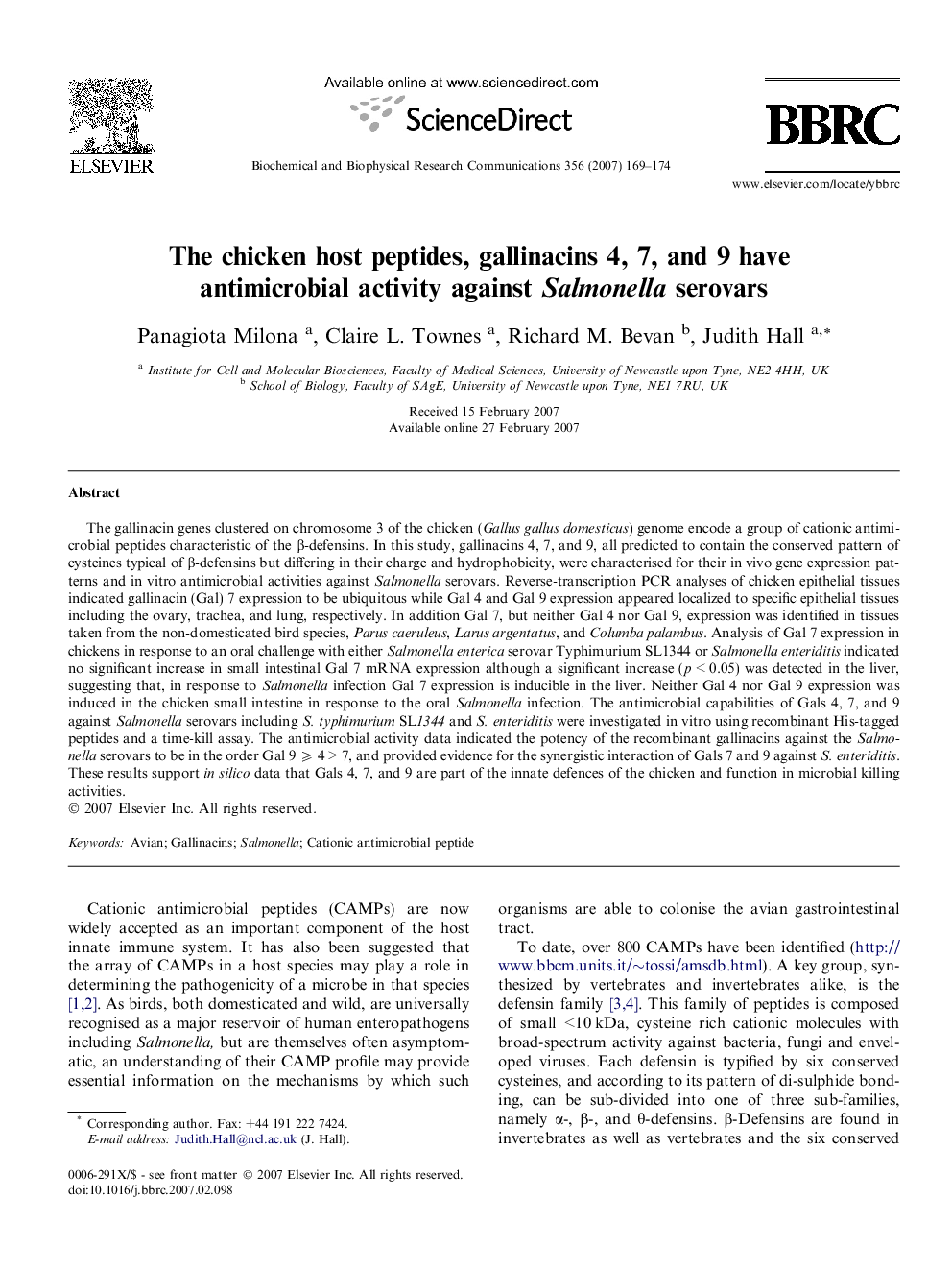| Article ID | Journal | Published Year | Pages | File Type |
|---|---|---|---|---|
| 1938644 | Biochemical and Biophysical Research Communications | 2007 | 6 Pages |
The gallinacin genes clustered on chromosome 3 of the chicken (Gallus gallus domesticus) genome encode a group of cationic antimicrobial peptides characteristic of the β-defensins. In this study, gallinacins 4, 7, and 9, all predicted to contain the conserved pattern of cysteines typical of β-defensins but differing in their charge and hydrophobicity, were characterised for their in vivo gene expression patterns and in vitro antimicrobial activities against Salmonella serovars. Reverse-transcription PCR analyses of chicken epithelial tissues indicated gallinacin (Gal) 7 expression to be ubiquitous while Gal 4 and Gal 9 expression appeared localized to specific epithelial tissues including the ovary, trachea, and lung, respectively. In addition Gal 7, but neither Gal 4 nor Gal 9, expression was identified in tissues taken from the non-domesticated bird species, Parus caeruleus, Larus argentatus, and Columba palambus. Analysis of Gal 7 expression in chickens in response to an oral challenge with either Salmonella enterica serovar Typhimurium SL1344 or Salmonella enteriditis indicated no significant increase in small intestinal Gal 7 mRNA expression although a significant increase (p < 0.05) was detected in the liver, suggesting that, in response to Salmonella infection Gal 7 expression is inducible in the liver. Neither Gal 4 nor Gal 9 expression was induced in the chicken small intestine in response to the oral Salmonella infection. The antimicrobial capabilities of Gals 4, 7, and 9 against Salmonella serovars including S. typhimurium SL1344 and S. enteriditis were investigated in vitro using recombinant His-tagged peptides and a time-kill assay. The antimicrobial activity data indicated the potency of the recombinant gallinacins against the Salmonella serovars to be in the order Gal 9 ⩾ 4 > 7, and provided evidence for the synergistic interaction of Gals 7 and 9 against S. enteriditis. These results support in silico data that Gals 4, 7, and 9 are part of the innate defences of the chicken and function in microbial killing activities.
